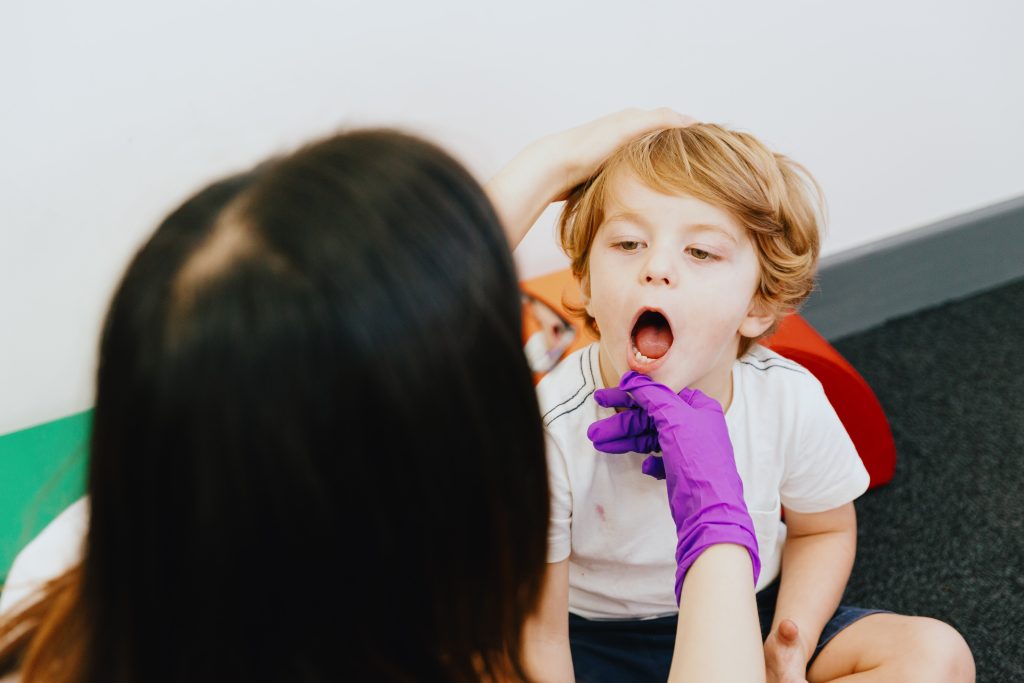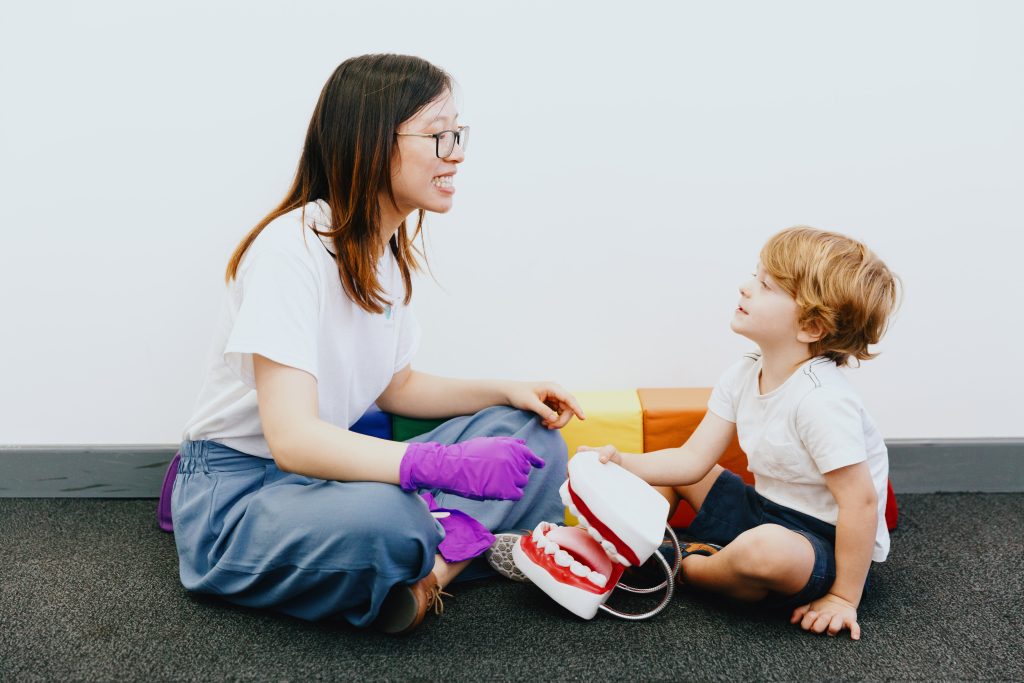


Orofacial Myofunctional Therapy (OMT) is often likened to “Physio for the Mouth,” and the description is quite fitting. Delving into the terminology, “Orofacial Myofunctional Therapy” literally translates to therapy for the muscles that influence the tongue, lips, cheeks, jaw, and face, extending its reach to encompass the head and neck as well.
Considering that Speech Pathologists are the experts in understanding the function of these muscle groups, OMT naturally falls under their purview. While OMT’s origins trace back to the dental profession, professionals from various fields, including osteopaths, myologists, physiotherapists, and lactation consultants, have undertaken specialised training to incorporate OMT knowledge into their clinical practice.
The central goal of OMT is to establish an optimal resting posture that can support functional speech, feeding, and swallowing.


When we speak of optimal resting posture, we refer to the state of these muscles during periods of rest when we’re not actively engaging in speaking, chewing, or swallowing. This could include moments spent watching television, playing, reading, working, or simply waiting for a turn in a conversation. It entails assessing whether the mouth is open or closed and determining the position of the tongue.
In a state of optimal function, the lips remain closed, and the tongue rests against the palate.
Individuals with Orofacial Myofunctional Disorders (OMD) frequently exhibit an open mouth posture at rest, and this is where OMT comes into play.
Maintaining an open mouth posture disrupts the potential for achieving correct full-body posture. The act of opening the mouth and jaw causes the hyoid bone to drop, compressing the airway. Consequently, we often observe a forward head posture, characterized by a flexed neck, in people who breathe through their mouths. It’s also the reason why many individuals pursuing Occupational Therapy goals related to posture, handwriting, and pencil grip may have concurrent OMD issues, even if the connection is not immediately apparent. Without establishing optimal resting posture, achieving proper bodily posture becomes challenging, affecting gross and fine motor skills.
Orofacial myofunctional therapy seeks to complement other therapeutic interventions, facilitating functional improvements in speech (e.g., addressing lisps), feeding (e.g., enhancing tongue lateralisation), swallowing (e.g., addressing tongue thrust swallows), and promoting nasal breathing. For further insights, explore our additional Orofacial Myofunctional (OMT) blogs.
To continue the conversation and delve deeper into this field, do not hesitate to contact us at spottherapyhub@gmail.com or dial 9326 6000. Additionally, don’t forget to tune in to The SPOT Therapy Hub Podcast, available on Apple Podcast and Spotify!